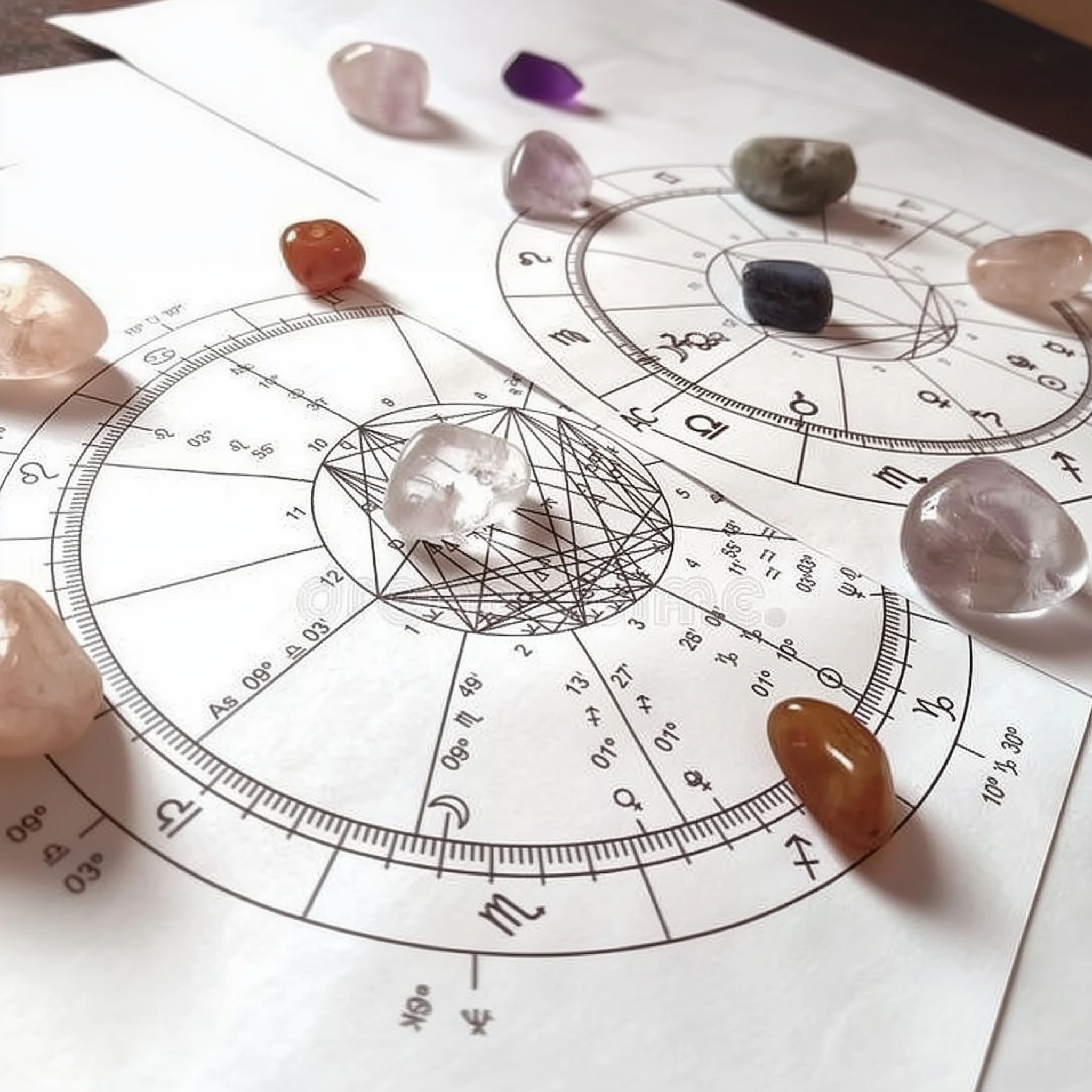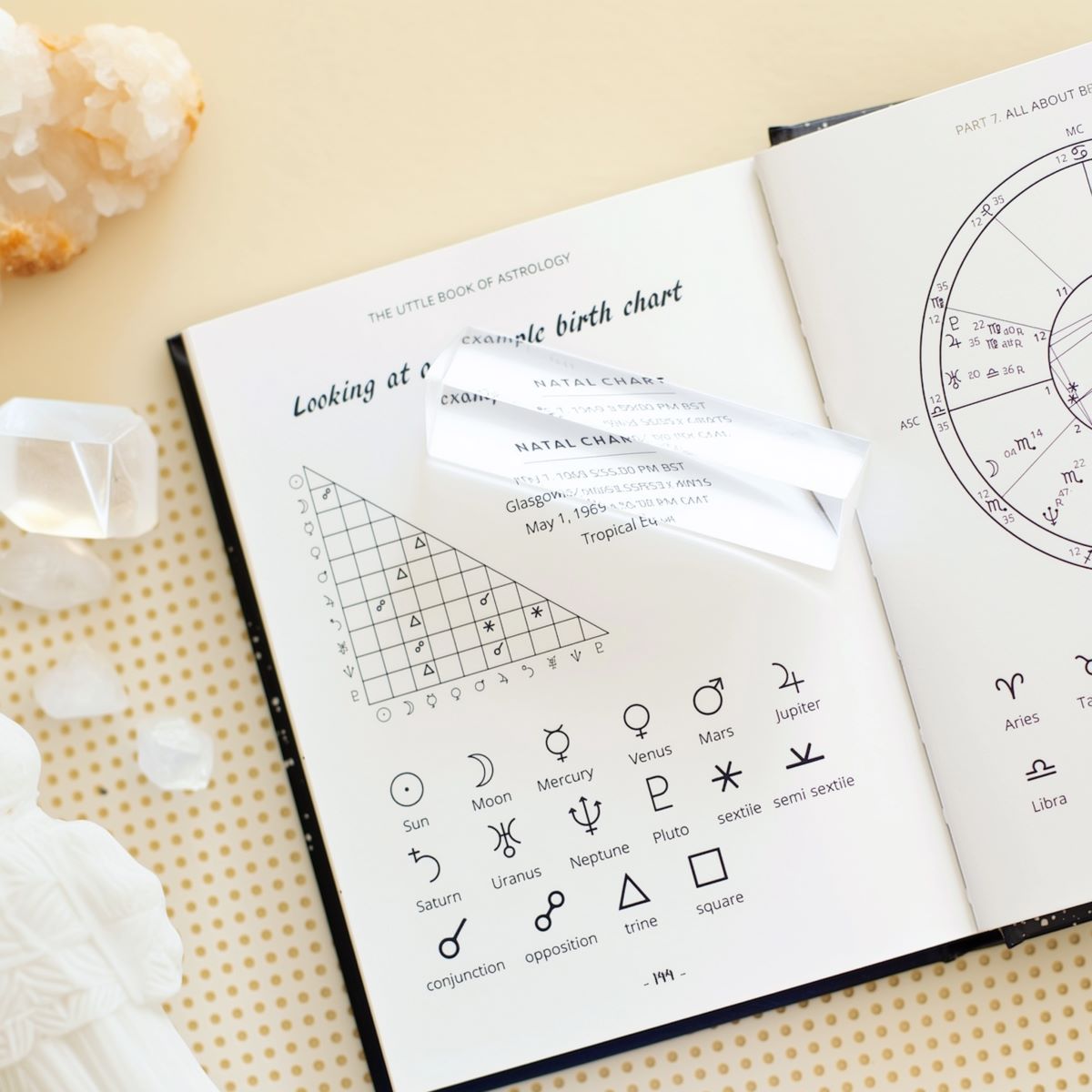
Dispositors in Astrology
 Dispositors role in astrology help us understand how planets in a birth chart interact with each other and express their energies. They offer a lens through which we can delve deeper into the chart, revealing hidden connections of planetary influences. One fundamental concept of dispositorship is the idea that a planet is at its most potent when placed in its own sign. This is because a planet in its own sign can freely express its natural attributes and characteristics, creating a harmonious resonance with the energies of that sign. It can be seen as a “double dose” of the planet’s energy, making it a focal point of influence within the chart.
Dispositors role in astrology help us understand how planets in a birth chart interact with each other and express their energies. They offer a lens through which we can delve deeper into the chart, revealing hidden connections of planetary influences. One fundamental concept of dispositorship is the idea that a planet is at its most potent when placed in its own sign. This is because a planet in its own sign can freely express its natural attributes and characteristics, creating a harmonious resonance with the energies of that sign. It can be seen as a “double dose” of the planet’s energy, making it a focal point of influence within the chart.
Now, let’s discuss the significance of a stellium, which refers to three or more planets clustered together in one sign. When such a grouping occurs, it can be a dominating force in a person’s life. The ruler, or dispositor, of this stellium becomes particularly significant because it governs all the planets within the cluster. Its energy radiates through the entire stellium, essentially shaping a considerable portion of the individual’s personality and life experiences. Therefore, understanding the dispositor of a stellium is essential for a comprehensive chart reading.
Mutual reception is another intriguing aspect of dispositorship. When two planets are in mutual reception, it means they are each placed in the sign ruled by the other. This creates a harmonious connection between the two planets, even if they do not form a conventional aspect. The planets involved in mutual reception share a common ground in their expression, as they essentially “exchange” signs, allowing them to connect and collaborate effortlessly. This connection can manifest as an underlying theme or synergy in the individual’s life, where the energies of these planets support and enhance each other.
Every sign in the zodiac is associated with a ruling planet. For example, Cancer is ruled by the Moon, Leo by the Sun, and so on. When a planet is placed in a sign, it is said to be “disposed” by the ruling planet of that sign. If for example, Venus and Jupiter in Cancer are disposed by the Moon because it is the ruler of the Cancer sign. Dispositors allows astrologers to follow a chain or sequence of rulership throughout the birth chart. If the Moon, in this case, is in a different sign, it would be disposed by the ruling planet of that sign, and this chain can continue until you reach a planet in its own sign. This final planet, known as the “final dispositor,” holds a significant influence in the chart because it governs itself.
Some birth charts have more than one dispositor. This happens when planets are placed in signs ruled by different planets. For instance, if someone has both Venus in Taurus and Mercury in Gemini, they have multiple dispositors: Venus is disposed by Venus (itself) in Taurus, and Mercury is disposed by Mercury (itself) in Gemini. In addition to multiple dispositors, mutual reception occurs when two planets are placed in each other’s signs.
This mutual rulership enhances the connection between these planets, even if they don’t form an aspect. This shared rulership can be an essential theme in the individual’s life, as these planets work together in a unique way. By following the chain of dispositors and considering multiple dispositors and mutual reception, astrologers can gain deeper insights into how planetary energies interact and manifest in a person’s life.
It is helpful if you read Kevin Burks Dispositor Trees for more information. The chain of dispositors represents a sequence of rulership in a birth chart, with each planet being disposed by the ruling planet of the sign it is placed in. By tracing these connections, astrologers can create a hierarchy of influence, showing how planetary energies are interconnected. When several planets in the chart are linked to a single planet through dispositors, it elevates the importance of that ruling planet.
Planets placed in their own signs are particularly powerful and specialized. They operate independently within their own network of influence, as they have a natural affinity with the energies of that sign. This can result in a heightened expression of the planet’s characteristics, making it a prominent feature in the individual’s chart. By considering these relationships and hierarchies through dispositors, astrologers can uncover the underlying structure of planetary influences in a birth chart.
Astrologer Glen Perry in An Introduction to AstroPsychology: A Synthesis of Modern Astrology & Depth Psychology offers his own description of dipositors.



















 Venus-Pluto Synastry: A Love So Powerful That It Might Just Kill Them
Venus-Pluto Synastry: A Love So Powerful That It Might Just Kill Them
 Moon Conjunct Pluto Synastry
Moon Conjunct Pluto Synastry
 Reflections on a Past Venus-Pluto Synastry Aspect
Reflections on a Past Venus-Pluto Synastry Aspect
 Mars Conjunct Pluto Synastry
Mars Conjunct Pluto Synastry
 Venus Trine Pluto: Dark Desires
Venus Trine Pluto: Dark Desires
 Mars-Pluto Synastry: Something Quite Dark and Dangerous
Mars-Pluto Synastry: Something Quite Dark and Dangerous
 Mars in Aquarius: Sex drive
Mars in Aquarius: Sex drive
 Uranus Transits 8th the House: Rebirth from Chaos
Uranus Transits 8th the House: Rebirth from Chaos
 Sun Square Pluto Natal Aspect: I Am Titanium
Sun Square Pluto Natal Aspect: I Am Titanium
 Mars Conjunct Pluto Natal Aspect: From Ember to Inferno
Mars Conjunct Pluto Natal Aspect: From Ember to Inferno
 Venus Trine Mars Synastry
Venus Trine Mars Synastry
 Sun Square Pluto Synastry: You’ve Got That Power Over Me
Sun Square Pluto Synastry: You’ve Got That Power Over Me
 Venus in the 5th House
Venus in the 5th House
 Moon in the 8th House: At Home in the Underworld
Moon in the 8th House: At Home in the Underworld
 Scorpio’s Cold Withdrawal
Scorpio’s Cold Withdrawal
 Mercury Square Pluto Natal Aspect
Mercury Square Pluto Natal Aspect
 Pluto Transits Moon: A Time to Grieve
Pluto Transits Moon: A Time to Grieve
 The Twin Journeys of Saturn’s Returns
The Twin Journeys of Saturn’s Returns
 Uranus Transits: 1st House: Winds of Change:
Uranus Transits: 1st House: Winds of Change:
 Moon Conjunct Mars Natal Aspect
Moon Conjunct Mars Natal Aspect